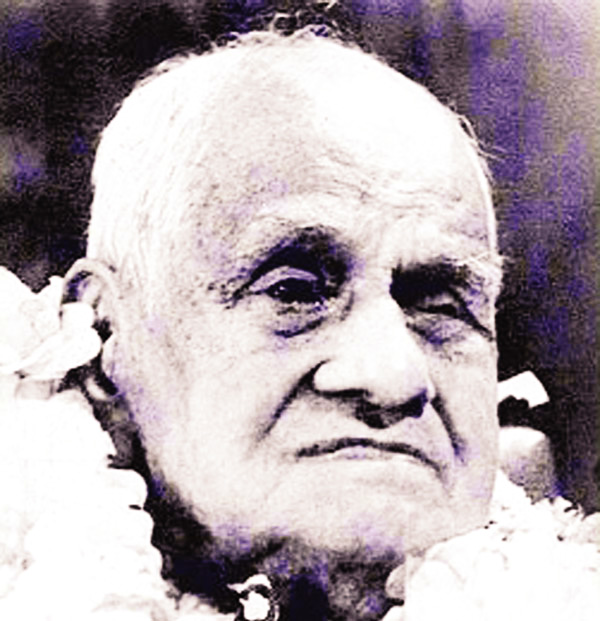
M Nurul Quiyum :
ohammad Nasiruddin (1888-1994) was a journalist and liberal thinker. He had little formal education. But through private studies and interactions he became an outstanding reformist intellectual of the Muslim society of the early 20th century. He was born in village Paikardi of Chandpur.
Originally he worked with insurance company as a field salesman. But soon he left the job, moved to Kolkata and chose the career of journalism. On 2 December 1918, he published an illustrated literary magazine called Saogat. But due to financial constraints the publication of the journal was kept suspended in 1922. However, its publication was resumed in 1926 and since then it continued uninterruptedly until 1947. In 1926, he organised the Saogat Sahitya Majlis and encouraged young writers through it.
The Rebel Poet Kazi Nazrul Islam, Roquiah Sakhawat Hossain, Shamsunnahar Mahmud, Begum Sufia Kamal and many other writers had used the Saogat as their platform to propagate their progressive and dissident views.
Nasiruddin printed the photographs of poets, litterateurs, historians and educated Muslim women in the Saogat in spite of vehement protest of orthodox Muslims. Through cartoons he sharply pointed at the irregularities prevailing in the society. Illustrating Muslim women in the press was particularly an act of uncommon feat in the perspective of social belief of the day.
In 1933, he established the ‘Saogat Colour Printing Press’ in Kolkata. In reinvigorating and reforming the Muslim society the Saogat had played significant role. For creating public opinion in favour of women emancipation, Nasiruddin had published another illustrated weekly called Begum in 1946. After the partition Nasiruddin opted for East Bengal and settled in Dhaka wherefrom the Saogat began to appear again regularly since 1954.
He was a fellow of Bangla Academy, a member of the Board of Trustees of the Bangladesh National Museum, and Chairman of the Board of Trustees of the Nazrul Institute. He received the Bangla Academy Award (Sammanana Puraskar) in 1975, Ekushey Padak (1977) and Independence Day Award. He introduced the ‘Nasiruddin Gold Medal’ after his name in 1976 to be awarded among the creative writers and journalists.
Mohammad Nasiruddin breathed his last on 21 May 1994 in Dhaka. -http://en.banglapedia.org
ohammad Nasiruddin (1888-1994) was a journalist and liberal thinker. He had little formal education. But through private studies and interactions he became an outstanding reformist intellectual of the Muslim society of the early 20th century. He was born in village Paikardi of Chandpur.
Originally he worked with insurance company as a field salesman. But soon he left the job, moved to Kolkata and chose the career of journalism. On 2 December 1918, he published an illustrated literary magazine called Saogat. But due to financial constraints the publication of the journal was kept suspended in 1922. However, its publication was resumed in 1926 and since then it continued uninterruptedly until 1947. In 1926, he organised the Saogat Sahitya Majlis and encouraged young writers through it.
The Rebel Poet Kazi Nazrul Islam, Roquiah Sakhawat Hossain, Shamsunnahar Mahmud, Begum Sufia Kamal and many other writers had used the Saogat as their platform to propagate their progressive and dissident views.
Nasiruddin printed the photographs of poets, litterateurs, historians and educated Muslim women in the Saogat in spite of vehement protest of orthodox Muslims. Through cartoons he sharply pointed at the irregularities prevailing in the society. Illustrating Muslim women in the press was particularly an act of uncommon feat in the perspective of social belief of the day.
In 1933, he established the ‘Saogat Colour Printing Press’ in Kolkata. In reinvigorating and reforming the Muslim society the Saogat had played significant role. For creating public opinion in favour of women emancipation, Nasiruddin had published another illustrated weekly called Begum in 1946. After the partition Nasiruddin opted for East Bengal and settled in Dhaka wherefrom the Saogat began to appear again regularly since 1954.
He was a fellow of Bangla Academy, a member of the Board of Trustees of the Bangladesh National Museum, and Chairman of the Board of Trustees of the Nazrul Institute. He received the Bangla Academy Award (Sammanana Puraskar) in 1975, Ekushey Padak (1977) and Independence Day Award. He introduced the ‘Nasiruddin Gold Medal’ after his name in 1976 to be awarded among the creative writers and journalists.
Mohammad Nasiruddin breathed his last on 21 May 1994 in Dhaka. -http://en.banglapedia.org

